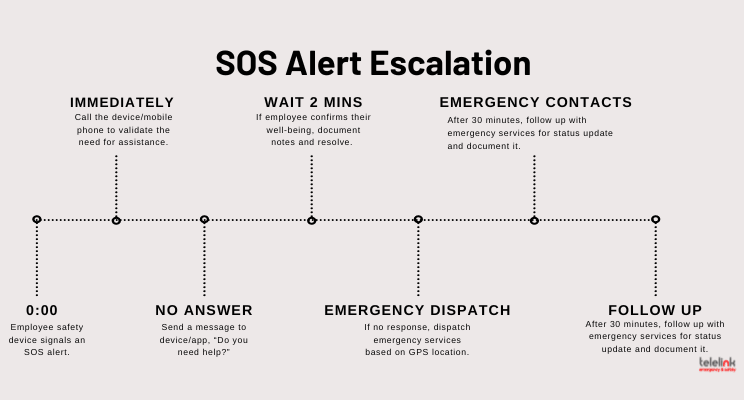
Everything is riskier when working in remote areas. A simple trip, slip or fall can have radically different consequences for someone working alone in a remote area compared to the same incident occurring to an office worker. Companies in the utility, oil & gas, mining, and manufacturing industries often require employees to travel great distances to complete jobs in remote areas. Therefore, the employees tasked with these jobs are at a greater risk for severe injury. In this article, we’re going to review 6 practices for protecting remote workers.
Proper clothing and footwear and protective gear
Starting with the basics, wear proper clothing and protective gear. You already know what’s appropriate for different environments. We don’t need to spend much time here.
Proper communication devices
Constant and reliable two-way communication is imperative to a safe remote work operation. Each employee should have a personal safety device that allows for constant communication, no matter how remote they are. For workers without reliable cell coverage, satellite GPS devices are the best way to ensure constant connectivity.
These satellite GPS devices are critical to any professional incident response. The device can pinpoint your exact location making it easy to find if you were to be unconscious, disoriented, or lost in unfamiliar territory. One of the more popular satellite GPS devices for remote workers serves as much more than just two-way communication. The Blackline G7x also provides the following:
- Gas detection
- Panic latch
- Man-down detection
- Two-way messaging
Garmin is another popular choice for satellite-connected devices and offers some similar features. You can read more about lone worker devices here.
Effective incident response
If employees are connected 24/7 with an effective means to communicate, they better have an equally effective response on the other end. Without one, the entire effort is wasted. That may sound dramatic, but consider this:
- An employee with her new satellite GPS device is out in the field. She’s injured and requires immediate assistance. She pulls the panic latch on her personal safety device and waits... and waits... and waits. Sure, the device is connected, and the message(s) were sent and delivered. The only problem? Nobody was monitoring her on the other end.
If employees don’t feel like they can trust the response of the supervisors, managers, or monitoring personnel they will stop using the safety devices altogether because – what's the point?
Supervisors are a risky choice for monitoring remote workers. They could be in a meeting, eating lunch, driving, in the bathroom, or even asleep while remote employees work overnight. The undue stress this puts on supervisors is enormous.
A dedicated safety monitoring team is the safest choice for organizations that value professional incident response. With a dedicated emergency response team, trained agents monitor every check-in and react with precision to any event.
The image below illustrates how a professional incident response is executed when a remote employee misses a scheduled check-in.

With an established escalation process, employees will have greater trust in the response to an incident and therefore, greater trust in leadership at the company.
Policy
An organization with the right device technology and dedicated safety monitoring team is still missing one key ingredient. A lone worker policy provides an outline to employees and supervisors of how they are expected to comply with lone worker safety practices. Based on working alone regulations in Canada, there are four key aspects to every working alone policy:
- Hazard assessment: Each remote environment in which a worker operates must undergo a hazard assessment.
- Reliable means of communication: Including a contingency plan for when workers are outside cell coverage.
- Periodic welfare checks: Commonly referred to as a lone worker session or check-in. These check-in periods are determined by the results of the hazard assessment.
- 24/7 monitoring support: Ensure there is always someone dedicated to monitoring the alerts of your remote workers.
If you do not have a lone worker policy, you can download our free template here.
Buddy System
When possible, utilize the buddy system. Although it is costly up front, sending two people on a one-person job can reduce the severity of serious incidents. The second person is not supposed to take part in the operations of completing a job in a remote area, they are intended to act as a second set of eyes and provide assistance to an injured employee.
Employers should treat pairs of remote workers the same as singular lone workers. They should still conduct a hazard assessment, have reliable two-way communication, and check-in with dedicated safety monitoring personnel.
Establish a home base
Remote workers are often deployed in groups or teams, and whether they arrive by truck, helicopter or other transportation, they go separate ways on foot or ATV after arriving. Prior to dispersing, teams should establish a home base or meeting point where they can reconvene periodically. During cold winters, this home base could be a company truck where employees can return to warm up or take a break together.
[More resources]
Want a custom recommendation on the best remote worker safety device for your organization? Take a short quiz to find out.




Post a Comment